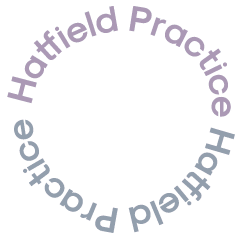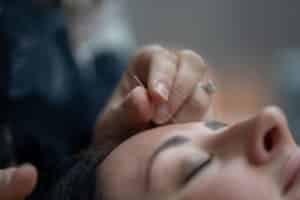Table of Contents
Pain Who Should You See? – A GPs Guide
Below are some of the conditions we treat. Hatfield Practice provides a practical and effective route for pain and injury. Private practice offers a considerable amount of frontline support for GPs and the NHS. Complementary treatments reduce the load and provide patients with direct support, education, treatment, rehabilitation, and an intermediate referral channel. Our feedback suggests that complementary therapies reduce the need for prescription painkillers.
Hatfield Practice – A genuinely progressive approach
The following descriptions are simply for guidance. They are not a definitive guide and are quite possibly contentious. However, these subjective observations are classified by diagnosis. A truly progressive approach requires looking at the tissue(s) causing the symptoms. It also helps to look at the patients musculoskeletal function, aetiology, maintaining and predisposing factors of the structures and tissues involved. To honestly assess and treat the patients efficiently and Cost-effectively, one should not only be helping the patient’s problem but also helping to reduce/prevent future recurrences through treatment, education and exercise.
Providing a practical approach to pain
Chronic inflammation can often increase pain, create a loss of motivation, depression, poor sleep, make long term analgesic use and high costs to the NHS and workplace. Hatfield Practice provides a practical approach, and perhaps our easy access, general speed and efficiency enable us to help patients quickly. We tend to get the “difficult” patients, often considered untreatable by other therapists and the NHS. We specialise in “triage” based care offering (at a basic level): Osteopathy for acute/chronic spinal pain. Physiotherapy for rehabilitation, occupational or quality exercised based programs. Acupuncture has enormous, far-reaching scope for many painful conditions such as osteoarthritis, chronic degenerative spinal and joint diseases, irritable bowel, infertility, shingles, bell’s palsy, chronic fatigue, blood pressure, and many tendonitis-based conditions as Achilles tendonitis and” frozen shoulder “.
Patient support, findings and onward referral
Hatfield Practice practitioners will provide a detailed examination or reports for GP’s, Occupational health or individual businesses if needed. It is often helpful to assess if a further referral (particularly to a surgeon) might be more appropriate, e.g. an” O/A” hip or knee. Or perhaps a painful “meniscus tear” or maybe a pathology that has presented as a musculoskeletal condition, perhaps often requiring surgery.
Onward Specialist referral
Specialist referral Is always provided if there is evidence of:
- Absence of cartilage
- Constant pain (even off weight bearing)
- Hyper-mobility in one or two directions (due to lost joint space and consequently lax ligaments)
- Suspicion of rheumatological/pathological condition etc.
Some of the conditions we treat
Chronic Spinal Problems (Spondylotic, Stenotic, Complex Chronic Postural etc. Cervical, Thoracic, Lumbar and Rib Mechanics):
- Response time: short term (2-10 visits)
- Long term: may require occasional return visits depending on patient compliance to exercises.
- Effectiveness: generally respond well (unless very advanced), and patients are very grateful for the pain relief/advice.
- Value: highly significant improvements to the quality of life, considerable reduction in analgesic usage and although patients generally need to return intermittently, they are usually happy to self-fund this if necessary.
Acute or Subacute spinal problems (non-disc), i.e. ligamentous, capsular strains, muscular spasms, joint pain, adhesive etc. Cervical, Thoracic, Lumbar and Rib problems:
- Response time: short term – return to full mobility is rapid, with complete recovery in 1-5 visits (occasionally, if severe, as many as eight)
- Effectiveness: Recommended by the NICE report and considerably more significant than 95% success rate (although with acute patients, a number will inevitably improve anyway! They won’t have first-hand professional advice or rehabilitation, which may stop it all over again, potentially becoming chronic over time.
- Value: return to work/sport should be a lot quicker (patient, possibly more knowledgeable). The treatment of predisposing and maintaining factors often helps reduce the likelihood of recurrence and the possible development of a long term injury (especially with shoulder injuries; to “prevent” a frozen shoulder etc.)
Disc injuries (Accurate differential diagnosis is not always easy between annular and genuine disc injuries):
- A) Annulus
- i) With true sciatica (i.e. lower motor neuron lesion):
Response time: short term (4-10 visits)
Long term: possible future discal episodes may occur as the disc fissures or degenerates.
Effectiveness: generally good, with the majority having good prognosis acupuncture, provides very efficient pain relief.
- ii) Without referred pain in lower extremity:
Response time: short term (3-6 visits)
Long term: occasionally, future episodes may occur, although simple exercises (if continued) often help.
Effectiveness: generally good, with the majority having a good prognosis
- i) and ii)
Value: This sort of problem without effective, high-quality musculoskeletal treatment can quickly become chronic, often leading to specialist referral (even though this type of intervention treatment may not be applicable anyway).
- B) Nucleus Pulposus (genuine prolapsed disc)
- i) With true sciatica and specific nerve root / dermatome /paresthesia / awful pain etc.
Response time: short term: 2-4 visits to assess risk/nerve damage, potential efficiency of treatment and stability of disc.
Long term: if responding, it generally takes 6-12 visits. May require 2-3 maintenance visits.
Much better in children & young adults, although diagnostic possibilities may be accurately assessed.
- ii) Without lower motor neuron lesion or referred pain in lower extremity:
Response time: short term: 1-3 visits to assess potential efficiency of treatment.
Long term: if responding well, it generally takes 5-8 visits to respond.
- i) and ii)
Effectiveness: variable as the prolapse, but we are always realistic/optimistic. If very severe, mainly if symptoms are only in the lower extremity (nerve damage/disc pressure), surgery can be the best course (this can be ascertained quickly). However, about 50-60% of patients resolve (although it may leave some residual symptoms, which tend to improve over time). The part of the disc and level involved is also significant.
Value: Those that avoid surgery and a specialist’s consultation are both grateful and save much expense to the NHS. The general level of response has often resulted in very positive comments from Orthopaedic surgeons (if the patient was due to return for a reappraisal).
Long term (non-specific/non-degenerative/non-disease) biomechanical problems:
Response time: short term (6-8 visits and as many as 12-15 in really severe cases)
Long term: may require a few periodic check-ups etc.
Effectiveness: variable depending on severity (and other underlying factors). Some respond very well in the long term, although this does depend on severity. These are the complex cases that we often see after “everyone else” has seen the patients (chronic fascia shortening/joint/fibrosis problems). 75% seem to get a lot better.
Value: Those who respond can significantly improve the quality of life (assuming they do not” need”’ their symptoms!) Also reducing drug demands and GP visits substantially.
Acute peripheral joints and sports injuries:
Response time: short term (1-6 visits)
Long term: may require a further 1-2 visits to check on exercises etc.
Complementary Treatment effectiveness: considerably more significant than a 95% success rate (although many will inevitably improve with acute patients!).
Value: return to work/sport should be a lot quicker. Treatment of predisposing and maintaining factors should help reduce the likelihood of recurrence and long-term injury development.
Osteoarthritic Hips and Post–patella O/A knees:
Response time: short term (initially 6-8 treatments)
Long term: generally requires 1-2 visits per month.
Effectiveness: patients generally improve, particularly with exercises and home self-treatment. However, this is such a heavily worked weight-bearing joint that it is not usually greatly helped in the long term.
Value: Will not “resolve” the problem but can often defer surgery by a year or two. Physiotherapy, Acupuncture or Osteopathy can be used to provide considerable relief and maintain good bodily function whilst a patient is awaiting surgery. Many patients wait for the surgery and find their rehabilitation slow as they have lost fitness/flexibility and mechanical efficiency. Again, often viewed as “very difficult” by other areas of therapy.
Osteoarthritic knees (the tibial plateau):
Difficult to treat, best treated with Acupuncture for pain relief and Physiotherapy based exercises. Does respond well to Acupuncture when used as a management/painkilling treatment. Well performed soft tissue (neuromuscular massage) will often bring good local short term relief. Osteopathy will improve the bodies’ ability to compensate and help reduce stiffness and tonicity around the spine, hip and knee. It also supports the other side of the body as the loading side tends to struggle and become painful.
Shoulder and elbow joints:
- A) Rotator Cuff /tendinitis problems (e.g. “tennis elbow ” & frozen shoulder/impingement)
Response time: 3-8 visits
Effectiveness: variable, often good and problems that otherwise seem untreatable can improve when a broad-based approach is applied
Value: can avoid steroid injections (and subsequent possible muscle necrosis) and reduce the likelihood of chronicity (i.e. and get better much quickly)
- B) “Frozen shoulder.”
Response time: short term (6-12 visits)
Long term: 1 or 2 – visits to check exercises etc.
Effectiveness: can substantially reduce recovery time (especially helpful in the initial, painful stage) from the “normal” 12-36 months.
Value: can significantly speed up the patient’s return to everyday life, reduce visits to GP’s, reduce the use of drugs and may avoid possible referral.
Most importantly, treating structurally predisposing factors reduces the likelihood of a (commonly consequent) contra-lateral frozen shoulder.
Young children:
Response time: depending on the problem, but children respond well to treatment
Effectiveness: can help avoid the necessity of paediatric/orthopaedic consultations
Headaches, ear pain, TMJ issues etc.
Response time: 2-6 visits
Effectiveness: these problems can often arise from the neck. Even a long history can often be relieved (even in some cases of “classic” migraine) by specific exercises, manipulation and work-based assessments.
Value: relief of pain, better sleep/function and substantial reduction in analgesia/NSAID usage and overall improvement in health
Post-operative and post-fracture recovery, neurological conditions,
Such as “tibial plateau O/A knees”, Adverse Neural Tension problems and conditions which only require exercises
Our Physiotherapists and Acupuncturists best treat these.
Conditions that respond well to Acupuncture
Hay Fever, severe pain problems, lethargy, R/A (earlier stages), other inflammatory disorders, fertility issues, shingles etc.
These can also respond very well to Acupuncture. Neurological conditions, “tibial plateau O/A knees”, Adverse Neural Tension problems etc., respond very well to Neuromuscular Osteopathy and Physiotherapy exercises.





